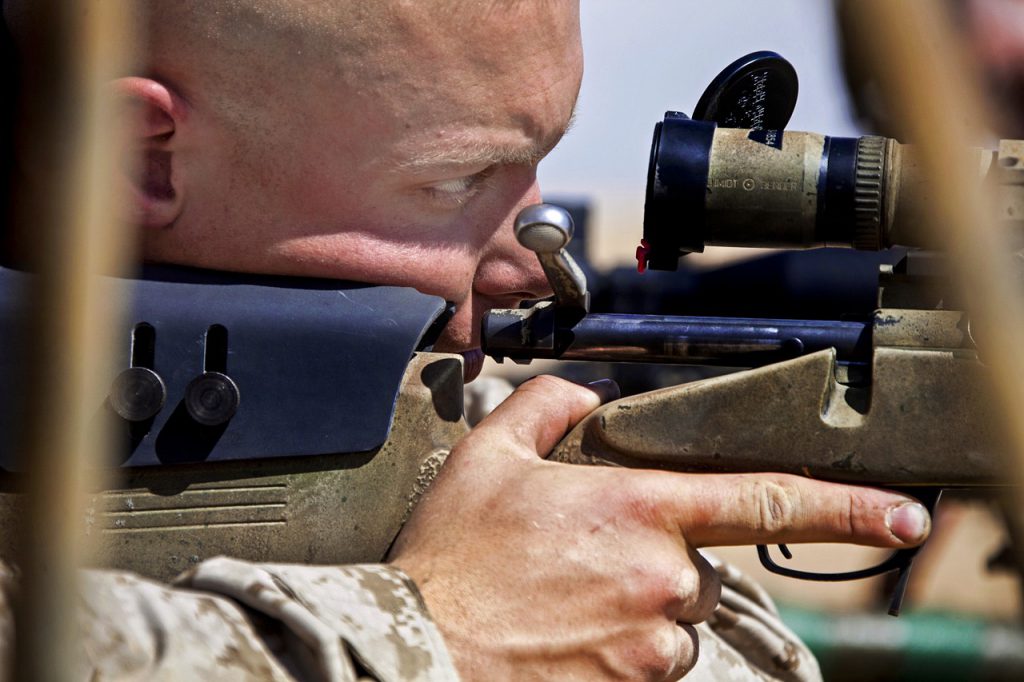Air Rifle Shooting Tips for Beginners – Shared by Expert Airgunners

Air rifles are quite powerful and can be used for a wide array of activities, starting with target practice and ending with hunting for medium to large game . Furthermore, you can choose from a wide selection of designs and types without investing a boatload of money, and the ammunition is affordable as well.
As such, the only thing standing between you and being a stellar hunter or shooter is practice. But it takes a bit more than plinking in the backyard to improve your aim and prepare yourself for various situations that can show up in the field!
For this, we talked to experienced airgunners and learned some tricks of the trade that we’re now passing down to you.
Get the Right Rifle Fit
In order to improve the accuracy of your shooting, you need a gun that fits you. This means you need to be able to hold it comfortably and use it without too much extra effort.
For instance, if the cheekpiece is too low or the barrel is too long for your comfort, then you can’t use the air gun to the best of your abilities as a shooter. First of all, you won’t feel comfortable holding it, and second, if the gun is not in perfect alignment with your stature, you risk getting a parallax error because the scope is not centered with your eyesight.
Another element that matters when considering the fit is the trigger. Each shooter has specific needs that vary according to the length of the arm, fingers, and overall upper body build. As such, to find the perfect length of pull for you, place the butt of the rifle in the crook of your elbow. If the pad of your trigger finger (not the first joint) falls comfortably on the trigger blade, this is the one for you!
Employ the Right Stance
Backyard plinking is fantastic for target practice, but it’s just as great for working on your stance (the body position related to the target).
For instance, when you shoot from a standing position, your body should be at 90 degrees to the target. Keep the feet apart with the left hip towards the target and left elbow towards the hip as much as possible. The left hand should support the rifle from underneath, with the left forearm as vertical as possible. The right arm should remain close to the body, to reinforce the position and operate the trigger.
Control your Breathing
When you’re shooting at a distant target or hunting, it helps to control your breathing before squeezing the trigger.
In fact, many experienced shooters and hunters employ a simple breathing exercise that helps them stabilize their aim and shoot with high accuracy. Here’s what they do, once they have the right stance and they’re ready to fire:
- Take a long breath and exhale at a normal pace to calm down
- Inhale slightly longer, exhale and hold the breath
- Squeeze the trigger and release the pellet
- Inhale and exhale normally
By doing so, you reduce the movement of the barrel and have better chances at hitting the target. Now, it may sound simple, but it takes a bit of practice as a beginner. So, you can also use this exercise during target practice, even if the target is at 30 feet.
Choose the Right Pellets
While most air rifles will work with a wide array of projectiles, there is a right pellet for each job.
For instance, if you’re doing target practice in your backyard (short distance), you’ll do just fine with cheap wadcutters. However, if you want to hit a target that’s farther away, you’ll need a pointed tip because it has better aerodynamic properties.
A pointed tip is also great for hunting small game, while the hollow point pellets are better suited for larger game.
Now, if you’re not accustomed to the different types and sizes of pellets, you can either get a test pack (it comes with several different types and sizes) or you can go to a specialized store and ask around.
Use a Good Scope
If you don’t want to use your air gun just for plinking, you must invest in a high-end scope designed to resist the recoil of an air rifle. It doesn’t have to be extremely expensive, but it should fit your rifle and support features that make your life better.
For instance, if you’re usually shooting in low-light conditions, then you need an illuminated scope. Also, if the shooting distance varies from one scenario to another, you’ll make better use of a scope with variable zoom than one with a fixed distance.
Now, if you’re not sure which scope works best for your air rifle, we wrote a detailed article on the best products to choose and why.
Wrap Up
Overall, consistency is your best friend when it comes to getting better at something (including shooting with an air rifle). So, start by getting the right tools to improve your aim, learn the correct stance and ways to shoot, and reinforce everything with constant practice. In time, the results will show!